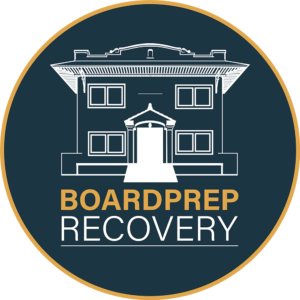According to a report by the Substance Abuse and Mental Health Services Administration (SAMHSA), nearly 19 million Americans aged 12 and older misuses prescription drugs, and 1 percent of Americans aged 12 and older has a prescription drug use disorder.[1]
When I was young, I clearly remember my mother was prescribed drugs to help her “get going in the morning” and then “to help her sleep at night.” Now, many years later—and being a recovering addict myself (with 23 years “clean and sober”)—I realize she didn’t know that just because a doctor prescribed a pill to her didn’t mean it was safe for her to take it.
The bigger picture is this: As the number of doctor-ordered prescription drugs rises, so do the rates of people misusing and getting addicted to them. And one of the most abused and addictive classes of prescription drugs on the market is opioids.
To clarify terms, addiction—per the American Society of Addiction Medicine (ASAM)—is “a treatable, chronic medical disease involving complex interactions among brain circuits, genetics, the environment and an individual’s life experiences. People with addiction use substances or engage in behaviors that become compulsive and often continue despite harmful consequences. Prevention efforts and treatment approaches for addiction are generally as successful as those for other chronic diseases.”[2]
And this definition does not just apply to people using “street” drugs like heroin and cocaine. Every single day, people across the U.S. and all around the world get addicted to medications their doctors have prescribed. And the reality is: If you become addicted to a prescription drug, you may end up compulsively taking it, even when it’s causing you harm.
The most addictive prescription drugs—including opioids, which are typically prescribed for pain—stimulate your brain’s reward system by flooding it with dopamine, causing a euphoric feeling, which results in triggering you to want to take the drug again. Unfortunately, especially with opioids (because of their potency), you can quickly fall into dependency on the drug to feel “good” or even “normal.” To make matters worse, the tendency with opioids and other addictive prescription drugs is that you can rapidly develop a tolerance to them, which results in you needing to take larger doses to get the same or similar effects.
Here are some signs and symptoms you may be misusing or becoming dependent on opioids:
- find yourself seeking or craving experience of euphoria
- feeling of lethargy
- unprovoked drowsiness
- confusion
- dizziness
- changes in vision
- headache
- seizures
- difficulty breathing
- nausea
- vomiting
- constipation
- changes in behavior or personality
To help you become more knowledgeable and well-informed, below is a list and description of the highly addictive prescription drugs known as opioids.
Oxycodone, which goes by the brand name OxyContin or, when in combination with acetaminophen, as Percocet, is a prescription opioid that changes how your central nervous system responds to pain, generating a euphoric, sedative effect.
Codeine is often prescribed to address more moderate pain or combined with other drugs to treat severe cold or flu symptoms (e.g., it can be found added into some prescription cough syrups).
When ingested in larger amounts, codeine-based cough syrup can produce a sedative “high” effect.
Fentanyl, a synthetic opioid, is most commonly prescribed for acute and chronic pain, especially for those with cancer. Regrettably, it’s also 50 to 100 times stronger than morphine, stimulates euphoric states and is illegally manufactured and sold as an illicit recreational drug.[3] Per the latest data from the National Center for Drug Abuse Statistics, fentanyl was associated with more than half (53%) of all drug overdose deaths in the U.S.[4]
Meperidine is also a synthetic opioid, typically sold under the brand name Demerol. It is often prescribed to treat moderate to acute pain, including prolonged pain. Similar to other opioids, it generates feelings of euphoria.
If you have developed an opioid dependency, when you stop using them, you may experience withdrawal symptoms, which can include:
- cravings for the drug high
- agitation or irritability
- runny nose
- trouble sleeping
- excessive sweating
- chills
- digestive problems
The fact is, being addicted to opioids (or any narcotic prescription drug) can produce harmful, even life-threatening effects on your health, well-being, relationships and/or career (including seizures or a fatal overdose).
If you or someone you know is struggling with a dependency on opioids (prescribed or not), it’s essential to get professional help. Treatment centers all over the country can provide supportive, confidential help to those seeking recovery from opioids or other prescribed medications. Medically-assisted detox can be a lifesaver in relieving the withdrawal symptoms and curbing the drug cravings that can arise.
For more information on opioid addiction and potential treatment options, here are some helpful websites:
- National Institute on Drug Abuse (NIDA)
- Substance Abuse and Mental Health Services Administration (SAMHSA)
- Narcotics Anonymous (NA)
[1] Prescription Drug Use and Misuse in the United States: Results from the 2015 National Survey on Drug Use and Health (samhsa.gov)
[2] ASAM Definition of Addiction
[3] Fentanyl | CDC’s Response to the Opioid Overdose Epidemic | CDC
[4] Fentanyl Abuse Statistics – NCDAS (drugabusestatistics.org)







